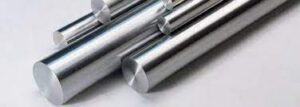Introduction
Welding, an art of fusing materials for strength and structural integrity, encounters a complex landscape when it comes to stainless steels. Among them, the enigmatic 410 stainless steel takes center stage. With its unique composition and properties, the question arises: can 410 stainless steel be welded with ease? In this comprehensive article, we embark on a journey through the intricacies of welding 410 stainless steel, exploring its weldability challenges, techniques, considerations, and the impact of its composition on the welding process.
1. The Fusion Dilemma: Welding Stainless Steels
 Welding stainless steels entails a complex dance between heat, composition, and metallurgical reactions. The properties of the base material, like 410 stainless steel, play a pivotal role in determining the welding process’s success.
Welding stainless steels entails a complex dance between heat, composition, and metallurgical reactions. The properties of the base material, like 410 stainless steel, play a pivotal role in determining the welding process’s success.
2. 410 Stainless Steel Unveiled: Composition Recap
410 stainless steel’s composition includes:
- Chromium (Cr): 11.5% – 13.5%
- Carbon (C): 0.08% – 0.15%
- Manganese (Mn): Up to 1.0%
- Silicon (Si): Up to 1.0%
- Phosphorus (P): Up to 0.04%
- Sulfur (S): Up to 0.03%
This composition significantly impacts the alloy’s weldability.
3. The Weldability Conundrum: Factors at Play
Welding 410 stainless steel presents challenges due to its unique attributes:
- Susceptibility to Cracking: The alloy’s high carbon content increases the risk of cracking during welding.
- Hardness and Martensitic Structure: 410’s hardness and martensitic structure contribute to post-welding brittleness.
4. Pre-Welding Preparations: A Delicate Dance
Successful welding begins with meticulous preparation:
- Clean Surfaces: Proper cleaning removes contaminants that can compromise weld quality.
- Proper Joint Design: Well-designed joints minimize stress and prevent cracking.
5. Welding Techniques: Navigating the Complexity
Various welding techniques can be employed:
- Gas Tungsten Arc Welding (GTAW/TIG): Suitable for thin sections, providing fine control.
- Shielded Metal Arc Welding (SMAW): Common for structural applications.
- Gas Metal Arc Welding (GMAW/MIG): Efficient for larger sections, offering versatility.
6. Post-Welding Considerations: Heat Treatment and Annealing
410 stainless steel’s post-welding behavior demands attention:
- Heat Treatment: Proper heat treatment can alleviate post-welding brittleness.
- Annealing: Annealing processes help relax the material, reducing internal stresses.
7. Cracking Concerns: Mitigation and Prevention
Preventing cracking requires careful execution:
- Preheating: Controlled preheating can minimize the risk of cracking.
- Controlled Cooling: Gradual cooling post-welding reduces the likelihood of cracking.
8. Applications and Industries
Welded 410 stainless steel finds applications in:
- Cutlery and Culinary Tools: Welded blades benefit from the alloy’s hardness and corrosion resistance.
- Industrial Components: Welded parts endure challenging conditions in industrial equipment.
- Aerospace: Welded components in aircraft structures harness the alloy’s strength.
9. Expert Insights: Best Practices for Welding 410 Stainless Steel
 Experts offer valuable recommendations:
Experts offer valuable recommendations:
- Preheat and Post-Weld Heat Treatment: Control temperatures to prevent cracking and improve post-weld properties.
- Joint Design: Opt for joint designs that minimize stress concentration.
10. Challenges and Mastery
Welding 410 stainless steel requires mastery:
- Cracking: Controlling carbon content, preheating, and controlled cooling are keys to minimizing cracking.
- Brittleness: Proper heat treatment and annealing mitigate post-weld brittleness.
11. Frequently Asked Questions (FAQ)
Q1: Can 410 stainless steel be welded using common techniques?
A1: Yes, 410 stainless steel can be welded using techniques like TIG, SMAW, and MIG, but it requires careful attention to pre-welding preparations and post-welding treatments.
Q2: What is the significance of 410 stainless steel’s carbon content in welding?
A2: The high carbon content contributes to the risk of cracking during welding and post-weld brittleness.
Q3: Is preheating necessary when welding 410 stainless steel?
A3: Preheating can be beneficial to minimize the risk of cracking, particularly in thicker sections.
Q4: Can welded 410 stainless steel components maintain their corrosion resistance?
A4: Proper welding practices, heat treatment, and post-welding treatments can help maintain corrosion resistance, but careful execution is essential.
Q5: What industries benefit from welding 410 stainless steel?
A5: Industries such as cutlery, industrial manufacturing, aerospace, and automotive utilize welded 410 stainless steel components due to their hardness and strength.
Conclusion
Welding 410 stainless steel demands a deep understanding of its unique composition and properties. While challenges like cracking and brittleness may arise, mastering the art of welding this alloy paves the way for applications across industries. Meticulous pre-welding preparations, careful selection of welding techniques, and strategic post-welding treatments are the tools that enable engineers and welders to unlock the potential of 410 stainless steel, creating robust and durable structures that stand the test of time.
